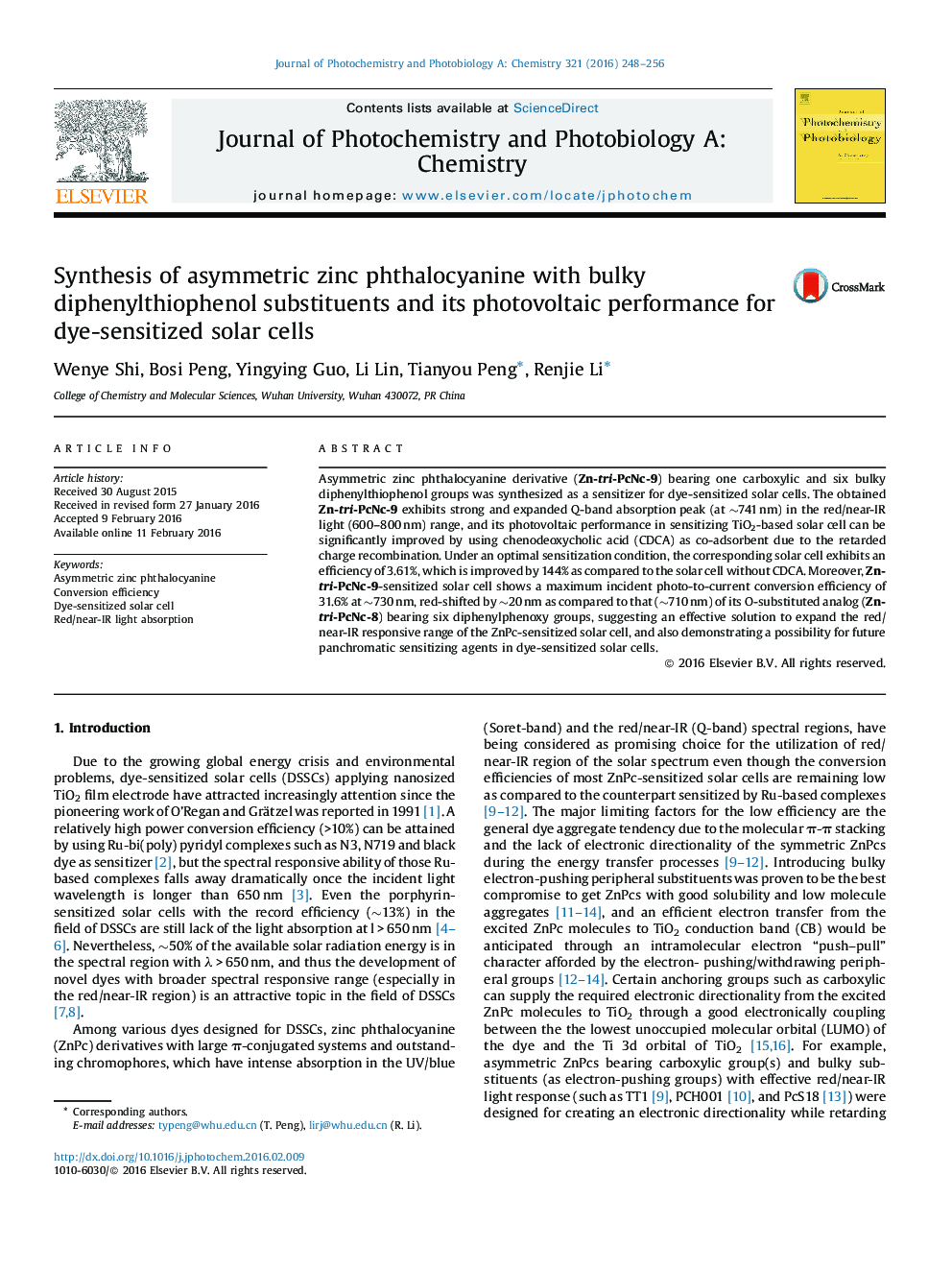| Article ID | Journal | Published Year | Pages | File Type |
|---|---|---|---|---|
| 26272 | Journal of Photochemistry and Photobiology A: Chemistry | 2016 | 9 Pages |
•Novel asymmetric ZnPc derivative was prepared as dye of DSSCs.•Zn-tri-PcNc-9 with six diphenylthiophenol groups has broad Q-band absorption.•CDCA as coadsorbent can retard ZnPc molecule aggregates and charge recombination.•Zn-tri-PcNc-9-sensitized cell containing CDCA yields 3.61% efficiency.•S atoms in ZnPc’s substituents expand the solar cell’s red/near-IR responsive range.
Asymmetric zinc phthalocyanine derivative (Zn-tri-PcNc-9) bearing one carboxylic and six bulky diphenylthiophenol groups was synthesized as a sensitizer for dye-sensitized solar cells. The obtained Zn-tri-PcNc-9 exhibits strong and expanded Q-band absorption peak (at ∼741 nm) in the red/near-IR light (600–800 nm) range, and its photovoltaic performance in sensitizing TiO2-based solar cell can be significantly improved by using chenodeoxycholic acid (CDCA) as co-adsorbent due to the retarded charge recombination. Under an optimal sensitization condition, the corresponding solar cell exhibits an efficiency of 3.61%, which is improved by 144% as compared to the solar cell without CDCA. Moreover, Zn-tri-PcNc-9-sensitized solar cell shows a maximum incident photo-to-current conversion efficiency of 31.6% at ∼730 nm, red-shifted by ∼20 nm as compared to that (∼710 nm) of its O-substituted analog (Zn-tri-PcNc-8) bearing six diphenylphenoxy groups, suggesting an effective solution to expand the red/near-IR responsive range of the ZnPc-sensitized solar cell, and also demonstrating a possibility for future panchromatic sensitizing agents in dye-sensitized solar cells.
Graphical abstractFigure optionsDownload full-size imageDownload as PowerPoint slide
